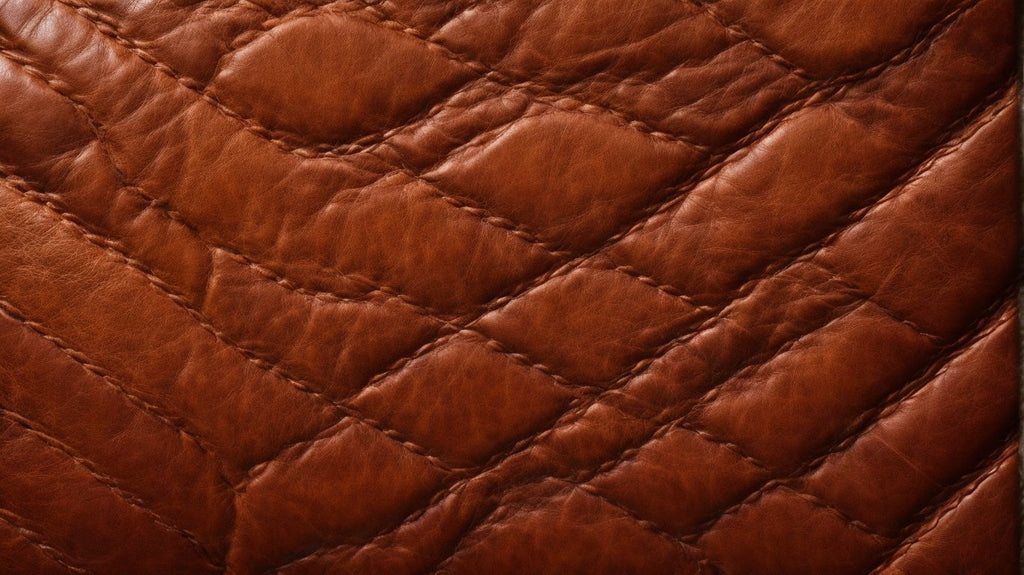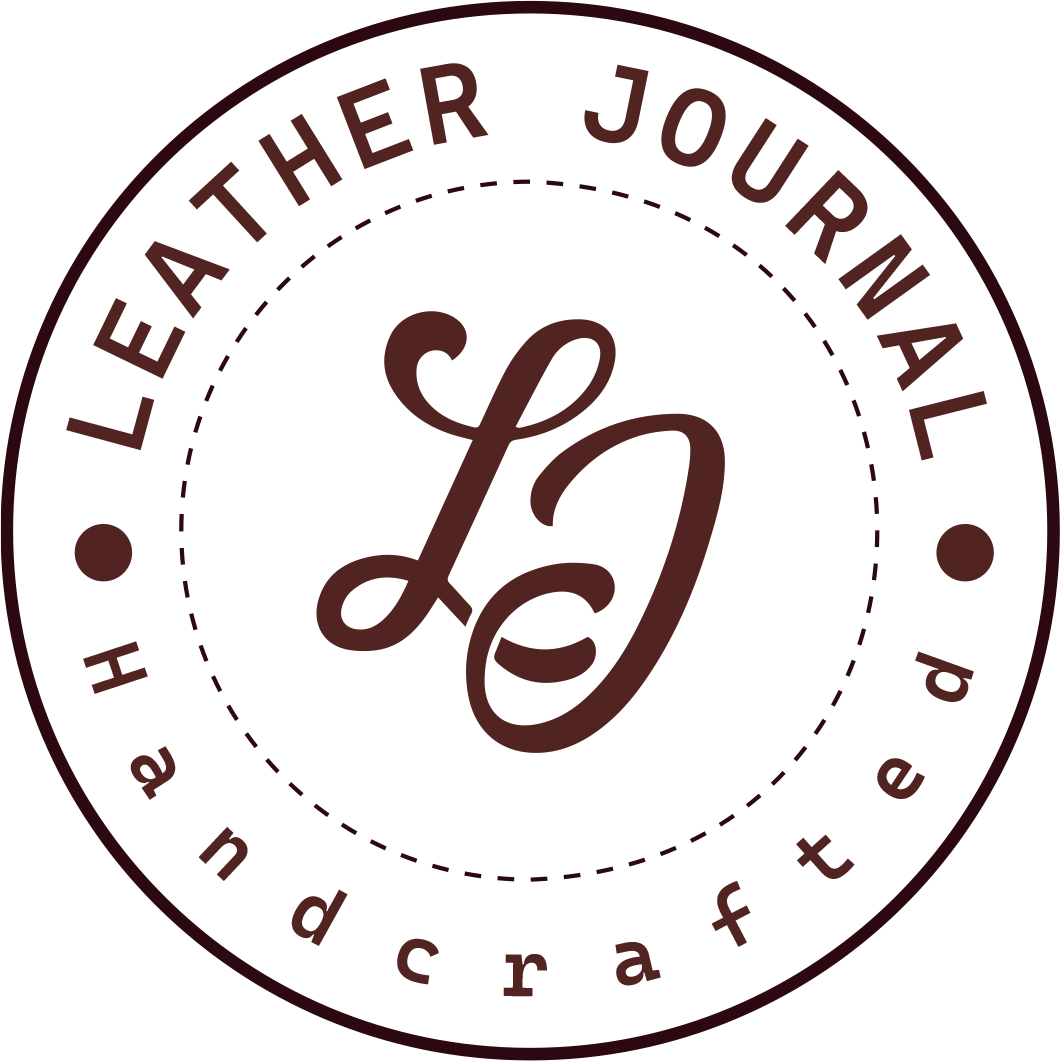What is Cross Grain Leather? - Characteristics, Uses & Care Tips
What Is Cross Grain Leather?
Cross-grain leather, also known as buffed or sanded leather, is a type of leather that has undergone a specific process on the grain side. This technique creates a unique texture and appearance, resulting in a distinct pattern and feel. The durability and resistance to wear and tear make cross-grain leather a popular choice for high-quality accessories such as wallets, handbags, and belts, giving them a luxurious look.

How Is Cross Grain Leather Made?
- To create cross-grain leather, the hide is split into several layers.
- The second layer from the surface is sanded to remove imperfections, revealing a smooth surface.
- After sanding, the leather is embossed with a grain pattern, giving it the distinctive cross-grain look.
- Finally, the leather is dyed and finished to enhance its appearance and durability.
What Are The Characteristics Of Cross Grain Leather?
Cross grain leather is a popular material known for its distinctive texture and durability. In this section, we will take a closer look at the characteristics of cross grain leather. From its unique texture to its resistance to stains and water, we will explore the qualities that make this leather type a top choice among manufacturers and consumers alike. Additionally, we will discuss its versatility and ease of use in various projects.1. Unique Texture
- Cross grain leather exhibits a unique texture due to its distinctive production process, resulting in a pattern that differs from traditional leather grains.
Cross grain leather: the only thing that lasts longer than a Kardashian marriage.
2. Durable and Long-Lasting
- Quality stitching and construction ensure that cross-grain leather products are both durable and long-lasting.
- Regular conditioning and moisturizing are essential for maintaining the material's durability, preventing it from drying out and cracking.
- To preserve the long-lasting nature of cross-grain leather items, it is important to protect them from direct sunlight and excessive heat.
- For optimal durability over time, store cross-grain leather goods in a cool, dry place to prevent damage.
3. Resistant to Stains and Water
- Wipe off stains promptly with a damp cloth.
- Use a leather protector to repel water and stains.
- Regularly clean with a leather cleaner and conditioner.
To maintain the quality of cross-grain leather, promptly address stains and water, utilize protective products, and follow a regular cleaning and conditioning routine. By doing so, you can ensure the longevity and resilience of cross-grain leather products.
Cross grain leather: because who has time to wrestle with finicky materials when you're trying to create something stylish and durable?
4. Versatile and Easy to Work With
- Adaptability: Cross grain leather is highly versatile and can be easily molded into various products such as bags, belts, and wallets.
- Workability: Its adaptability allows for seamless cutting, sewing, and crafting, making it an ideal choice for artisans.
- Compatibility: This type of leather is compatible with different design styles and can be used for both classic and contemporary creations.
- Pro-tip: When working with cross grain leather, it is important to use high-quality tools to maintain its integrity during the crafting process.
From wallets to jackets, cross grain leather is the chameleon of the fashion world - it can adapt to any use while still maintaining its unique texture.
What Are The Uses Of Cross Grain Leather?
Cross grain leather is a popular choice for high-quality wallets, handbags, and belts due to its durability and unique texture. It is also commonly used in the production of upholstery, providing a luxurious and long-lasting finish for furniture and car interiors. The distinct pattern of cross grain leather adds a sophisticated touch to a variety of leather goods, making it a sought-after option for luxury accessories and furnishings.
What Are The Differences Between Cross Grain Leather and Other Types of Leather?
When it comes to leather, there are many different types and textures to choose from. One type that stands out is cross grain leather, known for its unique appearance and durability. In this section, we will dive into the differences between cross grain leather and other types of leather. From grain direction to overall appearance, we will explore how cross grain leather sets itself apart from the rest. Additionally, we will also touch on the impact of these differences on the price of the leather.1. Grain Direction
- Inspect the leather surface to identify the direction of the grain pattern.
- Run your fingers across the leather to feel the texture and determine the grain direction.
- Observe any natural markings or creases to understand the orientation of the grain.
- Consult with a leather expert or refer to product specifications if unsure about the direction of the grain.
2. Appearance
- Inspect the surface for a consistent grain pattern and unique texture.
- Observe the appearance under different lighting to assess its luster and depth.
- Look for any natural markings or variations, which are characteristic of cross-grain leather.
Pro-tip: When comparing cross-grain leather with other types, note that it often exhibits a more uniform appearance due to the sanding process, resulting in a more modern and sleek aesthetic.
3. Durability
- Choose high-quality cross-grain leather for enhanced durability.
- Avoid exposing the leather to harsh conditions and chemicals.
- Regularly condition and moisturize the leather to maintain its durability.
- Store the leather items properly when not in use to prevent wear and tear.
A friend's cross-grain leather bag has proven its exceptional durability, enduring daily use for over five years without showing signs of wear.
Cross grain leather: the perfect blend of affordable and durable, making it the ultimate choice for budget-conscious fashionistas.
4. Price
Cross grain leather is highly valued for its distinctive texture, long-lasting durability, and ability to resist stains and water, all of which contribute to its higher price point compared to other types of leather. The complex manufacturing process and superior quality of the material justify its premium pricing.
If you want your cross grain leather to last, just remember to clean, condition, protect, and store it - it's like having a high-maintenance pet, but much more fashionable.
How Do You Care For Cross Grain Leather?
As a durable and stylish material, cross grain leather is a popular choice for bags, shoes, and other leather goods. However, like any other material, it requires proper care and maintenance to ensure its longevity and appearance. In this section, we will discuss the essential steps for caring for cross grain leather, including regular cleaning, conditioning and moisturizing, protection from sunlight and heat, and proper storage techniques. By following these tips, you can keep your cross grain leather items looking their best for years to come.1. Regular Cleaning
- To keep the cross-grain leather surface clean, use a soft, damp cloth to gently wipe it.
- For a deeper clean, it is recommended to use a leather cleaner specifically formulated for cross-grain leather.
- Avoid using strong chemicals or abrasive materials as they can cause damage to the leather.
- After cleaning, make sure the leather is completely dry before storing or using it.
2. Conditioning and Moisturizing
- Begin by cleaning the leather with a soft, damp cloth to remove any surface dirt or dust.
- Next, apply a small amount of leather conditioner to a soft, clean cloth and gently massage it into the leather using circular motions.
- Allow the conditioner to be absorbed into the leather for the recommended time specified by the product instructions.
- Finally, buff the leather with a dry, clean cloth to remove any excess conditioner and to restore the leather's natural luster.
3. Protection from Sunlight and Heat
- To prevent fading and drying out, it is important to avoid prolonged exposure to direct sunlight.
- When storing cross-grain leather items, it is best to keep them in a cool, dry place away from heat sources like radiators or fireplaces.
- To shield leather goods from sunlight and heat when not in use, consider using protective covers or storage bags.
- Applying a leather conditioner with UV protection can help mitigate the damaging effects of sunlight exposure.
4. Storage
- Proper storage is key for maintaining the quality of cross-grain leather items. Store them in a cool, dry place away from direct sunlight to prevent fading and drying out.
- Avoid using plastic bags or covers, as they can trap moisture and lead to mold and mildew. Instead, opt for dust bags or breathable fabric covers to protect the items from dust and allow for airflow.
- Before storing, make sure to regularly condition and moisturize the leather items to maintain their suppleness and prevent cracking.
- As someone who once stored a cross-grain leather bag in a humid closet, resulting in mold, I now know the importance of proper storage. I keep my bag in a dust bag in a cool, dry area to preserve its quality.
Is Cross Grain Leather Sustainable?
In the world of leather, there are various types of grain patterns, each with its own unique characteristics. One such type is cross grain leather, which is known for its distinctive criss-cross pattern. However, besides its aesthetic appeal, many wonder if cross grain leather is also sustainable. In this section, we will explore the sustainability of cross grain leather by examining its use of by-products, eco-friendly tanning processes, long-lasting nature, and potential for recycling and upcycling.1. Use of By-Products
- The use of by-products in leather production minimizes waste and maximizes resource efficiency.
- By-products such as hides, skins, and trimmings from meatpacking are repurposed, reducing the environmental impact.
- Efficient utilization of by-products aligns with sustainable practices, supporting eco-friendly leather production.
- Innovative technologies further enhance the use of by-products, contributing to a circular economy.
2. Eco-Friendly Tanning Processes
- Utilization of eco-friendly vegetable tanning methods to reduce the use of harmful chemicals.
- Adoption of chrome-free tanning to mitigate environmental impact and health risks for workers.
- Exploration of natural tannins extracted from tree barks, such as chestnut or quebracho, for a sustainable approach.
- Investment in water-saving techniques during the tanning process to minimize water usage and pollution.
3. Long-Lasting Nature
- High-Quality Material: Cross grain leather's long-lasting nature is due to its durable and sturdy composition, making it resistant to wear and tear.
- Minimal Maintenance: Its resilience reduces the need for frequent repairs or replacements, ensuring prolonged use.
- Timeless Appeal: The enduring quality of cross grain leather allows for sustained aesthetic appeal, making it a worthwhile investment.
- Ageing Gracefully: With proper care, cross grain leather develops a rich patina over time, enhancing its visual allure.
In the early 19th century, cross grain leather gained popularity due to its exceptional durability and timeless elegance. Craftsmen and consumers alike were captivated by its ability to withstand the test of time, making it a revered choice for luxury goods and artisanal creations.
4. Recycling and Upcycling Opportunities
- Repurposing: Transform cross grain leather into new products such as bags, wallets, or accessories.
- Upcycling: Use leather offcuts to create unique, eco-friendly items like keychains or coasters.
- Collaboration: Partner with artisans or designers to breathe new life into leather remnants.
- Donation: Contribute leftover leather to crafting or educational programs for reuse.
- Repurposing: Convert cross grain leather into fresh, innovative products like bags, wallets, or accessories.
- Upcycling: Utilize leather offcuts to craft one-of-a-kind, environmentally friendly items such as keychains or coasters.
- Collaboration: Team up with skilled artisans or designers to revitalize leftover leather pieces.
- Donation: Donate excess leather to crafting or educational programs for repurposing.




















